We hit the range with the Franchi Momentum All-Terrain Elite to see if the rifle proves all-season ready.
Imagine if a new, camo’d-out and fully loaded Ford F-150 arrived in your driveway, and all you had to do was punch start and go right-pedal-down to your next adventure. Maybe Ford isn’t your brand, but you get the picture. Such is the feeling of unboxing Franchi’s Momentum All Terrain Elite (MATE) rifle.
The MATE is a shorter but feature-rich variant of Franchi’s Momentum Elite hunting rifle released in 2022. Designed as a bolt-action, box magazine-fed, everyday-use constant companion rifle, the MATE has a well-chosen set of features on a foundation of quality components at a price that reflects its broad utility.
Franchi Momentum All-Terrain Elite Specs:
Cartridge: .308 Winchester (tested)
Type: Bolt action
Capacity: 10+1
Overall Length: 40 inches (with factory brake)
Weight: 7 pounds, 9 ounces
Barrel: 18 inches ; 1:11-inch twist Midnight Bronze Cerakote
Stock: Polymer, injection molded; integrated QD and M-Lok attachments
Trigger: Franchi RELIA trigger, 3 pounds (tested), adjustable 2 to 4 pounds
Sights: Folding ; 3 dot (folded), or aperture and post (unfolded)
MSRP: $1,449
Red Meat, No Salad
The first impressionist crowd might snap-label the MATE as just another scout rifle or truck gun. You could certainly set it up as either or both, but its rugged and utilitarian design reflects an aspiration for a flexible rifle that can guard the yard or fill the freezer and take some punishment in the process.
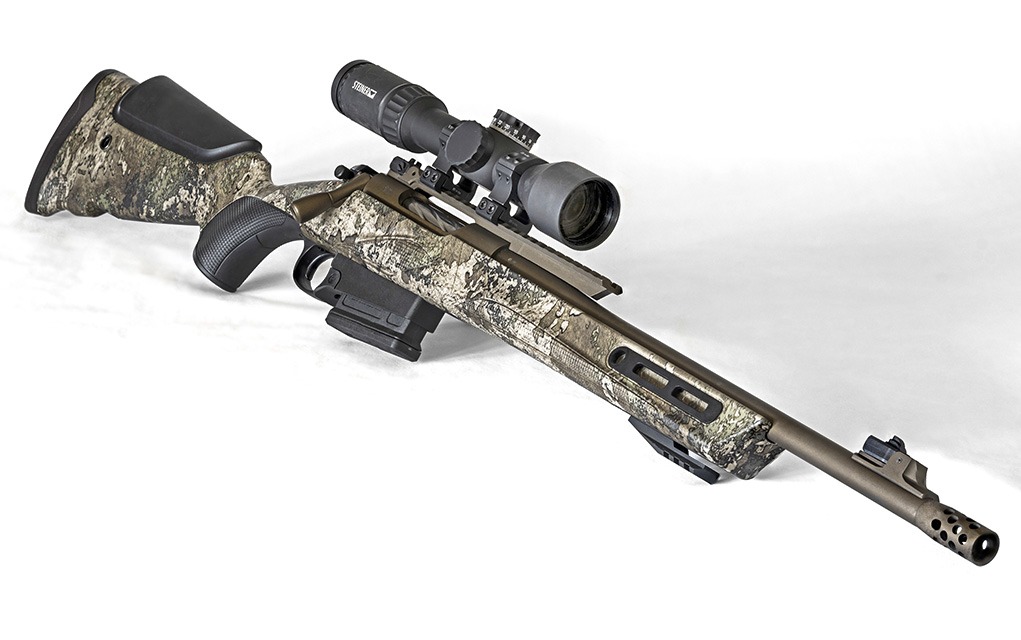
For example, the MATE’s 18-inch barrel gives it a compact overall length of 40 inches and an empty weight of 7.5 pounds. It doesn’t have Euro-inspired lines or sport rainforest hardwoods. Instead, its rust-proof and impact-friendly molded polymer stock is covered in a True Timber Strata camouflage that dares you to strap it to something knobby tires and sling mud on it.
However, beyond the rugged exterior are design features that make this rifle customizable for a variety of applications and preferences.
The MATE is a rifle made to be stowed and carried. The stock features three quick-detachment (QD) points on both sides and the bottom of the butt, with the same number at the forend. This allows the shooter to quickly configure (or reconfigure) the sling attachments for centerline, one-sided or single-loop-dangle-from-a-treestand options. For African stalks with frequent crouches, I appreciated a one-sided sling orientation that kept the bolt handle facing out and the optic flat, whether I carried the rifle on my shoulder or diagonally across my back.
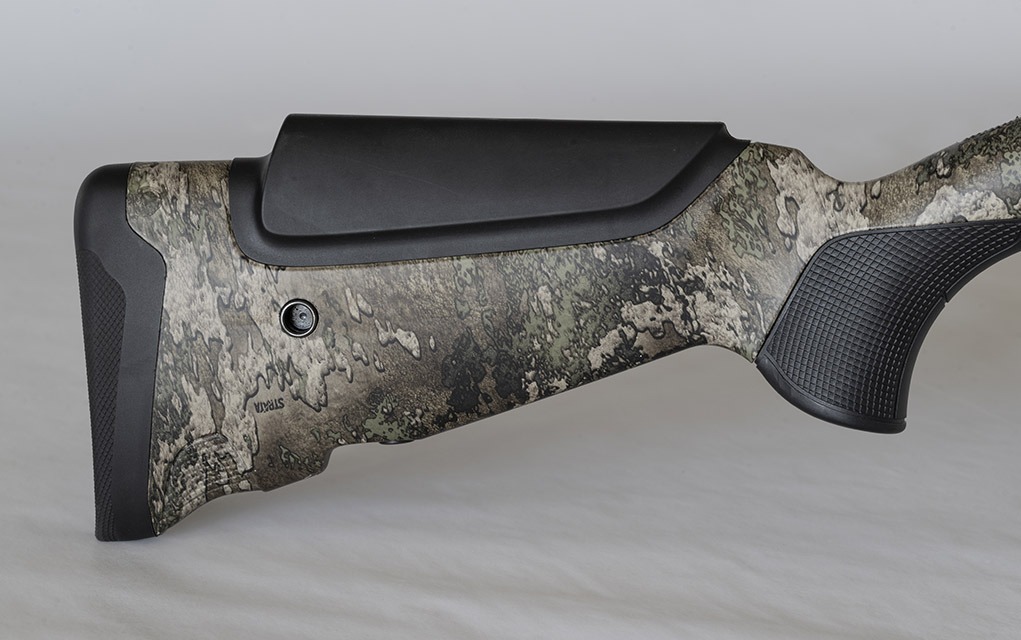

Forward of each of the forend’s three QD points are two metal Magpul M-Lok Modular Locking System attachment slots. This allows the shooter to go AR-crazy with attachments like bipods, lights or vertical grips. The M-Lok system slots sit flush and inside the polymer stock, adding rigidity and eliminating the cheese grater feel of Picatinny rails on handguards—though you can always attach them.
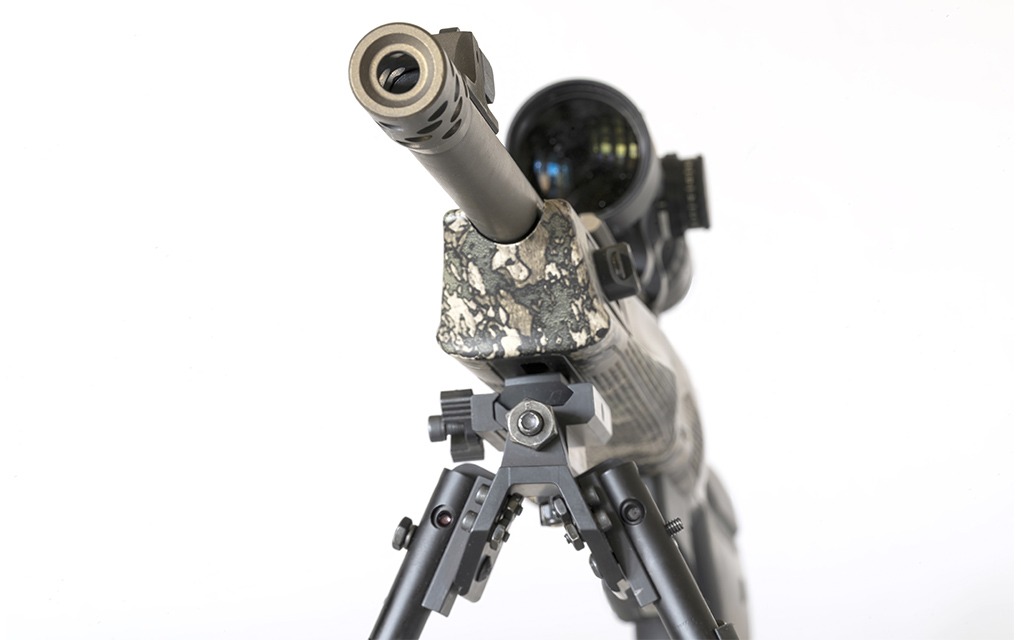

The forend has stippled sides and a flat bottom that provides a stable surface for field rests, but it’s not so wide that it feels unnatural in your support hand. Franchi’s final stock touches are grippy, rubberized surfaces on the palm swell, low and high interchangeable modular check pieces, and TSA recoil pads that come in three sizes to customize to the shooter’s preferred length-of-pull.
At first touch, Franchi’s investment in ergonomics on the MATE pays immediate returns—your hands just know where to go and what to do when they get there.
The function of the MATE follows its design. The 60-degree throw, three-lug bolt is spiral-fluted, chromed, and fitted with an oversized bolt knob. In addition to being cool to remove and look at, I found the narrower throw range quicker and an easy handling adjustment compared to traditional bolts. You won’t be finger-cycling the action like an Olympic bi-athlete, but neither will you feel like a short-armed hydraulic press operator.
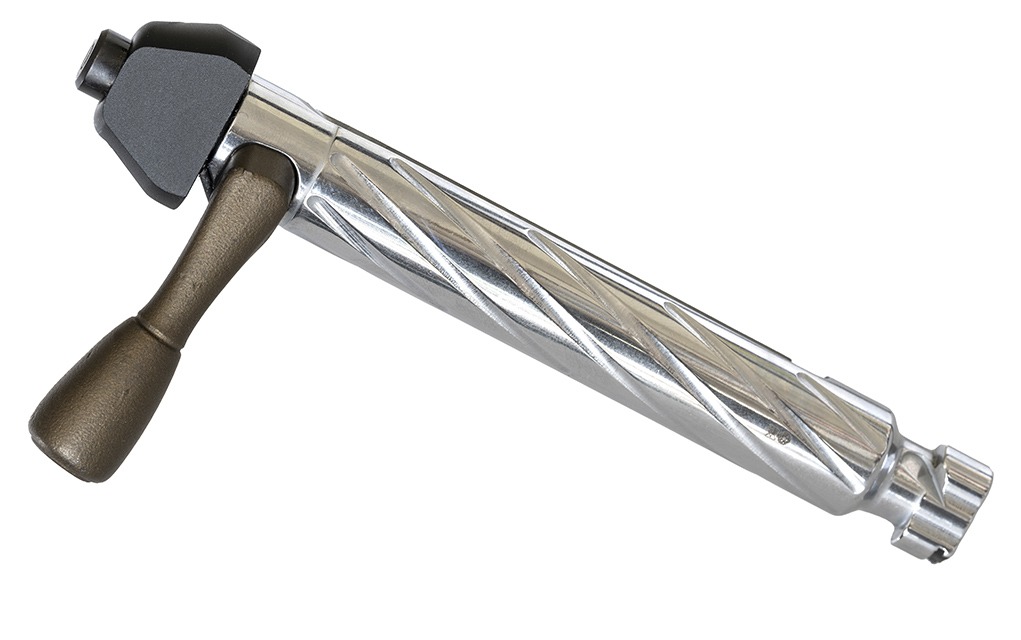

The MATE’s controls are similarly well-designed. The trigger is Franchi’s curved and rounded Relia Trigger, adjustable between 2 and 4 pounds. Out of the box, mine broke consistently at 3 pounds. An ambidextrous magazine release extends to and is slightly recessed into the leading edge of the trigger guard and the trailing edge of the polymer M5-style box magazine well. With normal-to-large-sized hands, I could comfortably reach the safety, trigger and magazine release controls by extending my fingers from a natural, fixed position on the curved grip.
The rifle comes with a 10-round polymer Magpul AICS magazine. The close tolerances of the polymer-to-polymer mating surfaces inside the magwell took a few reloads to smooth out, but after a few cycles, even empty magazines fell free with a moderate index finger touch on the release lever.
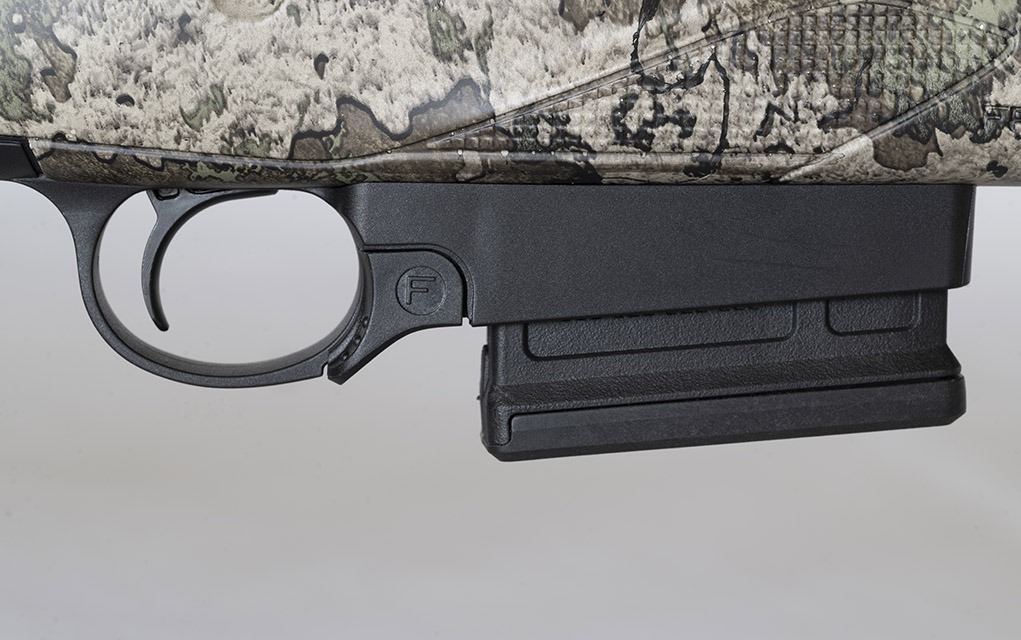

The MATE’s 1:11 twist, 18-inch Midnight Bronze Cerakoted barrel shortens the rifle’s overall profile, begging you to throw it in the truck like a loyal hound dog. The muzzle is threaded 5/8×24 and comes with a flared radial muzzle brake that adds 1¼ inches to its overall length but transitions smoothly from the barrel line without gaping zig-zag cuts or creating a speargun profile. Though Franchi includes a matching thread protector, unless you’re a length-minimalist, the muzzle brake and rubber TSA buttpad combination softens recoil considerably.
Utilitarian functionality also rides proudly atop the barrel. The MATE features folding front and rear sights that work as three-dot pistol-style sights in the down position and adjustable peep sights in the up position. The rear sight’s base is anchored in a cast pocket at the rear of the Pic rail, protecting its hinge. It’s a clever design element … except for the 8.5 inches of Pic rail notches that sing a siren’s song to attach optical accessories and block the iron sights.
Whatever your choice, there are two backups to a glass optic instead of one. Again, the MATE is what you make it, and doesn’t leave many excuses not to like it.
On The Range With The Franchi Momentum
Offered in .308 Winchester and .223 Remington, I tested the larger, more plains game-appropriate chambering. Initial range time returned a smooth-functioning action with no failures to feed or extract, using five different loads from 150 to 178 grains. I added a bit of lubricant to the action before I began, but not much. Franchi’s choice to chrome the bolt and the tighter cycling radius made for an easy experience.
I also switched out the muzzle brake for a SilencerCo Omega suppressor. This extended the overall length to 44.75 inches, which is still shorter than some of Franchi’s Momentum Elite series rifles.
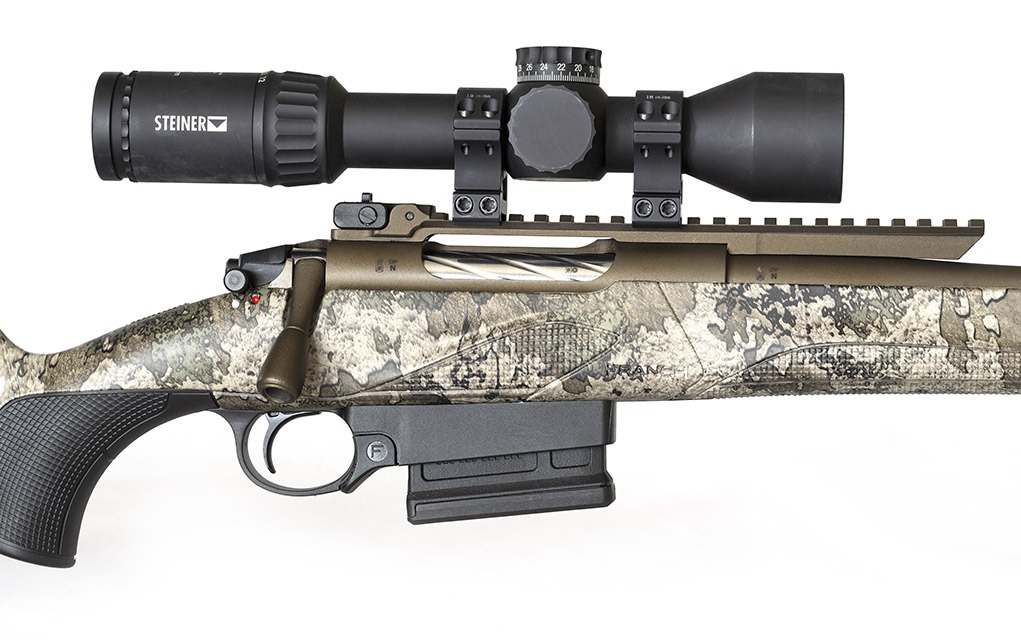

I ran my practice time and load testing with the same setup I took to Africa. I added a Steiner H6Xi 2-12×42 scope with Vortex rings, a Magpul adjustable sling mounted on the left-side QD attachments and a short, ramped section of Pic rail in the M-Lok slot on the bottom of the forend to attach a bipod. At the range, and especially for re-zeroing in Africa, I like to have an easy and consistent way to stabilize the rifle, so the bipod made both trips. Without the suppressor, the recoil was moderate. With the can, it was minimal. For a medium-length rifle, the MATE manages recoil well.
The best three-shot groups stayed well within Franchi’s 1-MOA guarantee with premium factory ammunition. The smaller and faster Hornady 150-grain SST had the tightest at group 0.38 inch. The laws of physics being as immutable as a dripping sink, the shorter barrel traded off its length and slow twist rate for the ability to control larger bullets. But the rifle handled loads across a 38-grain spectrum with consistent accuracy.
| CARTRIDGE | VELOCITY (FPS) | BEST 3-SHOT GROUP (INCHES) | BEST 5-SHOT GROUP (INCHES) |
| Federal 165 Grain Bonded SD | 2,550 | 0.48 | 1.74 |
| Hornady 150-grain SST | 2,949 | 0.38 | 0.71 |
| Black Hills 175-grain BTHP | 2,509 | 0.32 | 1.06 |
| Hornady 178-grain ELD-X | 2,547 | 0.83 | 2.12 |
| Hornady 165-grain AW InterLock | 2,658 | 0.57 | 0.84 |
World Traveler
The MATE survived the trip from Utah to the Eastern Cape region of South Africa, approximately 100 miles north of the coastal city of Port Elizabeth on the Indian Ocean. Despite a drop off the airline conveyor belt I witnessed helplessly from inside the plane and stops in Johannesburg and Port Elizabeth, the rifle required no windage adjustments and only a moderate elevation adjustment. Our African hunting area was 40 degrees warmer and 2,000-foot in elevation lower than my home range, so a 3-MOA adjustment wasn’t a surprise.
With a box magazine full of Hornady 178-grain ELD X ammunition, my Professional Hunter (PH) Chris Jonker and Tracker Mike Moukiwa set out in a traditional Land Cruiser “bucky” to glass for blue wildebeest—the poor man’s Cape buffalo. A slow crawl through the acacias produced a herd of Cape Buffalo and a family of giraffes before we found a high-sided canyon wall with a herd of wildebeests mixed in with Cape Zebra and springboks. Our stalk didn’t meet with success before the sun fell, but we had a spot to restart our search.
We relocated the herd the next as the morning sunlight burned thick white coastal clouds off the hillsides. Chris and Mike communicated with nods and hand signals to guide us quietly over and around a cliff where we hoped to ambush the herd on the back side.
For my part, I carried the rifle and watched the masters anticipate where the game might move and position me for a shot. After several climbs and descents along a ridgeline, we moved down and across grass and acacia-covered slopes strewn with football-sized rocks. Fortunately, we had the wind in our faces, dampening our steps and keeping our scent out of the herd’s noses.
Chris located a very big bull at the edge of the group, moving through cover just over 200 yards to our front. We crouched and maneuvered slowly closer, slightly to the bull’s left. Standing and braced on shooting sticks, I broke the shot. The bullet took him in the high shoulder, and he fell where he stood—in the shade of an acacia tree. From the looks of his “nubby” teeth, ground nearly flat with age, we chose an old bull beyond the end of his prime.
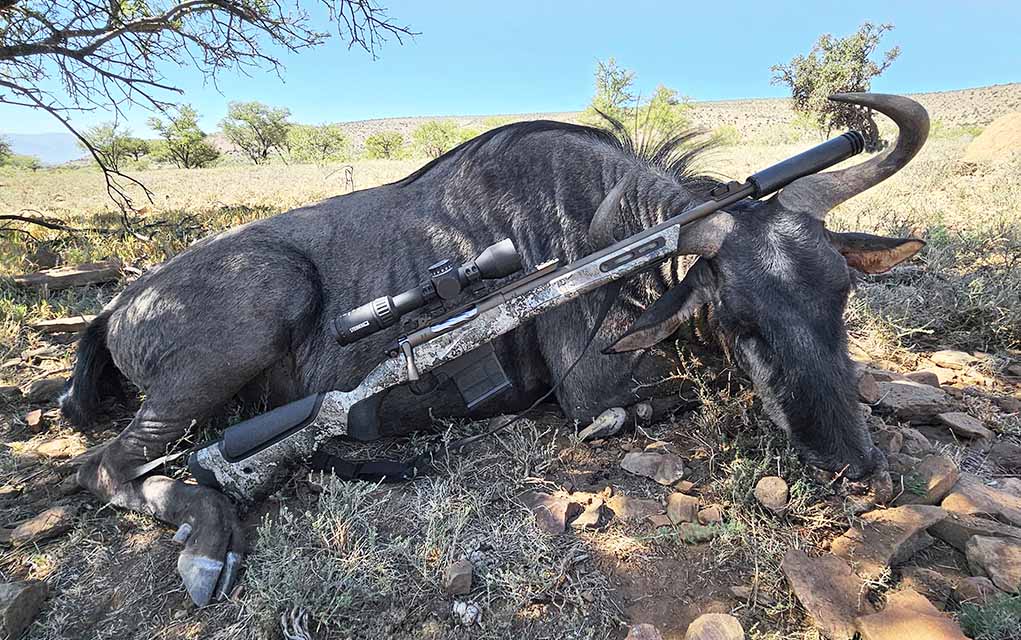

Final Rounds
Though not from a traditionally snobbish line of African safari rifles, the MATE was a fun and effective partner in the field. Its short length (even with a suppressor) made loading vehicles and crouching stalks under low trees easier. The .308 cartridge and Steiner H6Xi 2-12x42mm optic were more than sufficient for typical plains game ranges.
I experienced no failures or issues of any kind. As a working tool, the MATE became more familiar, faster, than any rifle I have taken to the field. It seemed to want to stay in Africa to keep hunting and managing the environment for the next generation—or maybe that was just me.
Franchi Momentum All-Terrain Elite Deals
| Franchi | $1,449 |   |
| EuroOptic | $1,299.99 |   |
Editor’s Note: This article originally appeared in the November 2024 issue of Gun Digest the Magazine.
More On Hunting Rifles:
Read the full article here











